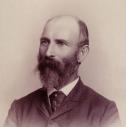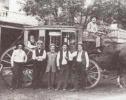
| Home | Open Account | Help | 321 users online |
|
Member Login
Discussion
Media SharingHostingLibrarySite Info |
Nostalgia & History > Cajon PassDate: 11/17/12 06:53 Cajon Pass Author: flynn Date: 11/17/12 06:55 Re: Cajon Pass Author: flynn Wikipedia has a webpage on Cajon Pass.
http://en.wikipedia.org/wiki/Cajon_Pass The following excerpt is from the above webpage. “The California Southern Railroad, a subsidiary of the Atchison, Topeka and Santa Fe Railway, was the first railroad to use the Cajon Pass as a route through the mountains. The rail line through the pass was built in the early 1880s as part of a connection between the present day cities of Barstow and San Diego. Today the Union Pacific Railroad and BNSF Railway (the successor to the Santa Fe) use the pass to reach Los Angeles and San Bernardino. Due to the many trains, noteworthy scenery and easy access, it is a popular location for railfanning, and numerous photographs of trains on Cajon Pass appear in books and magazines about trains. The current Amtrak Chicago-Los Angeles Southwest Chief passenger train travels through the pass.” Wikipedia has a webpage on the California Southern Railroad. http://en.wikipedia.org/wiki/California_Southern_Railroad The following excerpt is from the above webpage. “Construction began in National City, just south of San Diego, in 1881, and proceeded northward to the present day city of Oceanside. From there, the line turned to the northeast through Temecula Canyon, then on to the present cities of Lake Elsinore, Perris and Riverside before a connection to the Southern Pacific Railroad (SP) in Colton. Following a frog war where the SP refused to let the California Southern cross its tracks, a dispute that was resolved by court order in favor of the California Southern, construction continued northward through Cajon Pass to the present day cities of Victorville and Barstow. The line, completed on November 9, 1885, formed the western end of Santa Fe's transcontinental railroad connection to Chicago. Portions of the original line are still in use today as some of the busiest rail freight and passenger routes in the United States.” Picture 2 is from the above Wikipedia webpage. “Description: A Santa Fe Railroad train stopped at Cajon Siding, California. The brakeman is standing atop the train during a stop to cool the train's braking equipment after descending Cajon Pass. Date: March 1943. Source: Library of Congress, Prints & Photographs Division, FSA-OWI Collection, call number LC-USW3-022165-D DLC. Author: Jack Delano, photographer, United States Office of War Information ‘A westbound train pauses at Cajon siding to cool its wheels before continuing down the pass in March 1943. The station and facilities are at left.”  Date: 11/17/12 06:56 Re: Cajon Pass Author: flynn I did a Google Image Search for Railroad Cajon Pass and got a number of pictures.
Picture 3 is from the following website. This is picture number 16 of 17 pictures related to the Cajon Pass on this website. http://www.sbdepotmuseum.com/photo-histories/fred-perris-conquers-cajon-pass-1885/10324748 Picture 3, Train Traverses Cajon Pass.  Date: 11/17/12 06:58 Re: Cajon Pass Author: flynn Picture 4 is picture number 1 on the above website.
Picture 4, Fred Perris, Chief Engineer of the California Southern Railroad  Date: 11/17/12 07:01 Re: Cajon Pass Author: flynn Wikipedia has a webpage on Fred Perris.
http://en.wikipedia.org/wiki/Fred_T._Perris The following excerpts are from the above webpage. “Fred Thomas Perris (January 2, 1837 – May 12, 1916) was Chief Engineer of the Atchison, Topeka, and Santa Fe Railroad, who oversaw the construction of the last leg of the 2nd Transcontinental Railroad from Barstow, California through El Cajon Pass and down to San Bernardino and Los Angeles, a task that employed six thousand laborers, and is still in use by BNSF Railway and Union Pacific Railroad. He also laid, track from Riverside, California to San Diego, California laying out a series to town sites along the track, one of which, Perris, California was named in his honor. The city of Perris, California, a station on the California Southern Railroad, was named in his honor.” “Frederick Thomas Perris (January 2, 1837 – May 12, 1916) was born in Gloucester, England. At age 12 his parents imigrated to Australia where he was apprenticed to an architect/mechanic. At age 16 he moved again with his mother and sisters, settling in the Mormon colony at San Bernardino, California, where he was employed as the chain boy on the crew that surveyed and subdivided that city. Four years later, when the colony collapsed the family moved to Utah, where they learned his father, rather than join the Mormons, had sold his assets in Australia, returned to England and died. He [Frederick Thomas Perris] proceeded to England to settle his father's estate. During the two years that required, he was employed as an apprentice in the new technology of photography. Returning to America with his 'childhood sweetheart' as his bride, he proceeded to Salt Lake City, Utah, where he attempted, apparently without much success, to sell his wares as a photographer.” Does anyone have or know the location on the Internet of any Perris photos? The following webpage of the Perris Valley Historical Society has a biography of Frederick Thomas Perris. http://www.perrismuseum.com/index.php/fred-t-perris The following excerpt is from the above website, “Frederick Thomas Perris was born in Gloucester, England, January 21, 1837. When 12 years old, he went to Melbourne, Australia, with his mother and there was educated for his profession as a civil engineer. On his way to Australia he stopped at San Francisco, seeing America for the first time in 1849. Returning to America in 1853 he did a large amount of professional work on the Pacific Coast for the United States Government and the State of California in the capacity of Deputy United States Mineral Surveyor. He was naturalized at Salt Lake City, Utah, August 30, 1858 by W.J. Appleby, Clerk and Curtis E. Bolton, Deputy. Saturday, November 29, 1858, he sailed from New York to Liverpool on the Steamship Thornton, under Captain Collins, and was married in Cheltenham, England, May 5th, 1859. His first railroad work was done in the early 1860's on the Union Pacific under Samuel B. Reed, during its construction. October 12, 1863, he was appointed Territorial Surveyor for the Northeastern portions of Utah Territory by Jesse W. Fox, Territorial Surveyor General. Later he again returned to England to settle his father's estate. From England he returned to Salt Lake City where he was in business for a number of years. In 1874 he came to San Bernardino from Salt Lake City by ox team and was actively and prominently identified with Southern California in both an official and professional capacity. He served San Bernardino as City Engineer, the county as County Surveyor and in 1889 was a member of the Boad of Trustees. This is Marguerite McCann, who turned 100 years old just prior to the Depot grand re-opening ceremony on 1/31/09. She is the oldest living relative of Fred T. Perris He helped survey the Rancho San Bernardino and its sub-divisions. He acted as Assistant Engineer for Jas. D. Schuyler of the State Engineering Department in measuring water in the valley of San Bernardino and locating the reservoir sites of both Big and Little Bear Valleys. He also laid out the City of San Bernardino. While in the employ of the California Southern Railway Company, he practically built all of the lines comprising the Los Angeles division. When the question of securing a railroad into the valley was agitating the public mind, Mr. Perris was chosen to go to San Diego to meet G.B. Wilbur and L.G. Pratt of Boston, who represented eastern capitalists in railroad matters to learn their intentions and invite their attention to this part of the state. The result of his mission was a visit of these gentlemen to San Bernardino and an investigation of the city and valley which was the inceptive step of securing the present fine railroad facilities. During the latter part of 1882 he became Chief Engineer and Superintendent of Construction of the California Southern Railway (now the Los Angeles division of the A.T.& S.F. Railway). On September 13, 1883, he drove the first passenger train into San Bernardino and sounded the first locomotive whistle to be heard therein. In 1900 he was made manager of the Santa Fe's properties. He retired from service on a pension October 1, 1914, and died in 1916. While he never lived in Perris the town, Perris Hill, and Perris Avenue were all named after Mr. Perris. While Chief Engineer of the Santa Fe, the change in fuel for locomotives was made. The working plans and designs for this conversion were prepared in his office about 1894.” The following webpage has a biography and an interesting picture. http://www.findagrave.com/cgi-bin/fg.cgi?page=gr&GRid=34038962 Picture 5, “middle man on the ground F.Perris.”  Date: 11/17/12 07:03 Re: Cajon Pass Author: flynn Picture 6 is from the following website,
http://www.sbcity.org/cityhall/library/services/history/pioneers/p_r/dedication.asp Picture 6, “Dedication Ceremony, December 23, 1917, at Cajon Pass. Pictured: Sheldon Stoddard, John Brown, Jr., Sidney Waite, George Miller, George M. Cooley, Silas Cox, Richard Weir?, Jasper N. Corbett?”  Date: 11/17/12 07:04 Re: Cajon Pass Author: flynn Date: 11/17/12 12:32 Re: Cajon Pass Author: Frisco1522 Did you ever stop and think how wonderful it would be to have just SEEN all of the scenes that Otto Perry and Richard Kindig witnessed and thankfully photographed?
When the get the wayback machine finished, I want to go back to those days with all modern digital equipment. Date: 11/17/12 15:39 Re: Cajon Pass Author: GPutz There probably hasn't been that much snow in Cajon Pass since the last ice age. Gerry
Date: 11/17/12 15:39 Re: Cajon Pass Author: the_expediter Nice! Wonder what happened to that marker...Think I read in "Steel Rails Through California" that during WW2, the smoke from 10 freight trains climbing or descending Cajon Pass could be seen from Summit...Steve
Date: 11/18/12 12:05 Re: Cajon Pass Author: flynn Hi atsffan. Is the marker on the website below the marker you are referring to in your statement, “Isn't that the marker for the Mormon Trail that was located at the end of the little stub road on the east side of I-15, south of the restaurant (Tiffiny's?) located at Hwy 138?”
http://www.waymarking.com/waymarks/WM4VVB_No_576_Sante_Fe_and_Salt_Lake_Trail_Monument_San_Bernardino_CA This marker doesn’t look like the marker in pictures 6 and 7 above. Date: 11/18/12 13:27 Re: Cajon Pass Author: flynn I looked for additional information on the waymarking webpage but I guess I didn’t scroll down the webpage. The monument on the waymarking webpage must be the same monument as in Pictures 6 and 7 but as you say it must have been updated.
Date: 11/18/12 17:56 Re: Cajon Pass Author: sgtfhrn The monument in pictures 6 and 7 is the Stoddard-Waite Monument. A little more info and a picture is available here. http://www.landmarkquest.com/sanbernadino/chl578.htm
For perspective, the Santa Fe and Salt Lake Trail Monument would be located in the far left background of picture 6 near the base of the bare hill (right behind the umbrella) on the left (north) side of Crowder Canyon. Edited 1 time(s). Last edit at 11/18/12 18:06 by sgtfhrn. |